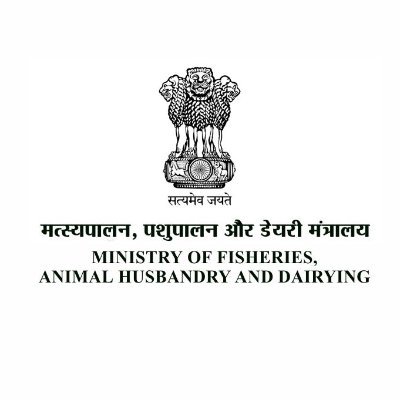August 23rd Declared as “National Space Day” to Honor Chandrayaan-3 Mission’s Success
The Government of India has declared August 23rd as “National Space Day” to celebrate the remarkable success of the Chandrayaan-3 Mission, which accomplished safe and soft landing of the Vikram Lander and deployed the Pragyaan rover on the lunar surface near the South Pole. This historic achievement places India among an elite group of space faring nations, making India the fourth country to land on the Moon and the first to do so near the south pole of the Moon. This achievement is being celebrated across the country during July and August 2024, with the goal of engaging and inspiring the younger generation in the field of Space Science and Technology.
Union Minister for Fisheries, Animal Husbandry & Dairying and Panchayati Raj Shri Rajiv Ranjan Singh will grace the event on “Celebration of National Space Day” at Krishi Bhawan, New Delhi tomorrow being organized by Department of Fisheries at 10 AM in august presence of Ministers of State for Fisheries, Animal Husbandry & Dairying and Panchayati Raj Prof. S. P Singh Baghel and Shri George Kurian, Secretary, Department of Fisheries Dr Abhilaskh Likhi and other dignitaries.
To commemorate the remarkable success of the Chandrayaan-3 Mission, the Department of Fisheries is organizing series of seminars and demonstrations on “Application of Space Technologies in Fisheries Sector” in coastal States and UTs under the guidance of Dr. Abhilaskh Likhi. These seminars and demonstrations are being organized across 18 locations, covering topics such as Space Technology in Fisheries – An overview, the Communication & Navigation System for the marine domain, space-based observation and its impact on improving the fisheries sector.
Department of Space, INCOIS, New Space India Ltd. and other stakeholders including Fishermen, Sagar Mitras, FFPOs, Fisheries Cooperatives, ICAR Fisheries Research Institutes, State/UT Fisheries Departments, Students from Fisheries Universities and colleges will participate in hybrid mode.
The Indian fisheries sector plays a vital role in the Nation’s economy, playing an important role in providing sustenance, employment, and economic opportunities, especially in rural areas. With an extensive coastline stretching 8,118 km, a vast Exclusive Economic Zone (EEZ) covering 2.02 million square km, and abundant inland water resources, India showcases a rich and flourishing fisheries ecosystem.
Space technologies can significantly enhance Indian marine fisheries management and development. Some of the technologies like Satellite Remote Sensing, Earth Observations, Satellite based Navigation System and GIS, Satellite Communication, Data Analytics and AI etc., brought transformative changes in the sector. Satellite Remote Sensing utilizes Satellites like Ocean-sat and INSAT to monitor ocean colour, chlorophyll content and sea surface temperature to identify the potential fishing grounds, and detect phytoplankton blooms, sediment, and pollutants for understanding the ocean health. Earth Observations leverage satellites like INSAT, Ocean-sat, SAR etc. to monitor ocean currents, waves and extreme weather hazards, for optimizing fishing operations and ensuring safety. Satellite based Navigation System and GIS utilises Navigation with Indian Constellation (NavIC) enabled GNSS tracking for fishing vessels and GIS mapping for recognizing marine habitats, fishing grounds, and protected areas. Communication at sea could be possible with Satellites. Satellite based communication networks enables real-time data exchange between vessels, shore-based stations, and research institutions for improving Maritime domain awareness, safety and livelihood of Fishermen. Data Analytics and AI can predict fish distributions, detect anomalies, and optimize fisheries management using data from various sources. These advanced systems enhance efficiency and safety at sea through satellite monitoring which detects illegal activities, supports aqua mapping, and offers disaster warnings. Additionally, technologies like image sensing and aqua zoning offer precise tools for effective fisheries management.
The Potential Fishing Zones (PFZ) advisories have brought remarkable changes in the marine fisheries sector. By fetching the ocean colour monitor data from the Ocean-sat satellite, potential shoals of fish aggregation are identified and disseminated to fishers. These PFZ advisories have significantly increased the estimated marine fisheries potential of India from 3.49 lakh tonnes in 2014 to 5.31 lakh tonnes in 2023. This has enabled fishers to locate and harvest better catches efficiently, reducing the time and effort spent at sea while also contributing to the sustainable management of marine resources.
The Department of Fisheries, Government of India supports these technological advancements through the Monitoring, Control, and Surveillance (MCS) under the Pradhan Mantri Matsya Sampada Yojana (PMMSY). This support includes the provision of communication and tracking devices such as Very High Frequency (VHF) radios, Distress Alert Transmitters (DATs), and transponders for the fishing vessels with services such as Navigation with Indian Constellation (NavIC) enabled Global Navigation Satellite System (GNSS), Automatic Identification System (AIS), and Potential Fishing Zones (PFZ) information.
Furthermore, the Department of Fisheries, Government of India under PMMSY, has approved a project on National Rollout Plan for Vessel Communication and Support System in marine fishing vessels for Monitoring, Control and Surveillance. National Rollout Plan envisages installation of 1,00,000 transponders on marine fishing vessels, including mechanized and motorized vessels across 9 coastal states and 4 union territories with an outlay of Rs.364 Crores.

